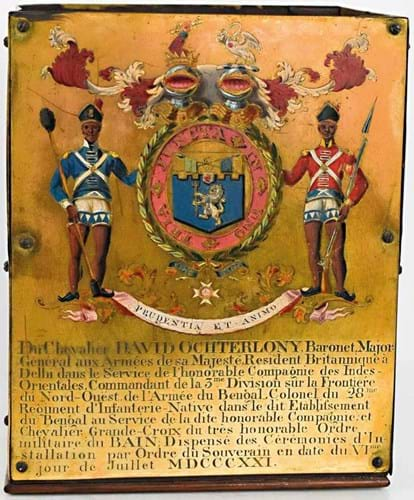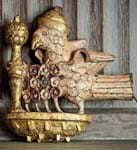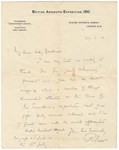
Four brass and enamel garter stall plaques mounted as a ‘wastepaper basket’ sold for £10,000 at Stamford Auction Rooms on February 26.
One can easily be forgiven for thinking these 9in (22cm) enamelled brass plates, each extensively inscribed and dated de VI jour de Juillet MDCCCXXI, were made across the Channel. However, the use of French here was a medieval throwback. They were made in 1821 as stall plates for recipients of the Knights Grand Cross of the Order of the Bath – the chivalric award that originated with the Plantagenets.
During their lifetime, all members of the order are entitled to display their heraldic crests and banners at St George’s Chapel, Windsor. However, garter stall plates stay in the chapel permanently and together provide a complete record of successive occupants of each stall (and a key reference for students of British heraldry).
That is the theory. In practice some have been ‘liberated’ over the years and do occasionally come to market. Christie’s New York sold a group of eight similar plates in October 2010 for $19,000. With some stamped with the name of the specialist London copper plate maker George Harris of 31 Shoe Lane, they were similarly dated to 1815-22, the period in the wake of the Napoleonic Wars when the order was restructured to include those who had distinguished themselves in military service. Those knights living at the time of the reorganisation had automatically become Knights Grand Cross.
The four plaques offered in Stamford had, probably late in life, been mounted on a frame for use as a planter or wastepaper basket. It doubtless helped bidding that they had been made for genuine A-listers.
Three were European royalty. They were named: Prince Ernest Augustus (1771-1851), fifth son of George III and King of Hanover from 1837; Prince Adolphus, Duke of Cambridge (1774-1850), George III’s seventh son; and Leopold Saxe-Coburg-Saalfeld (1790-1865), husband to Princess Charlotte of Wales and future King of Belgium. The one ‘commoner’ here was Sir David Ochterlony (1758-1825), the Massachusetts-born East Indian Company officer who held the post of British Resident to the Mughal Court at Delhi.
Bidding for the quartet started well above the £500-800 estimate following a flurry of activity on the internet. However, it was a phone bidder who won them at £10,000 (plus 20% buyer’s premium).















